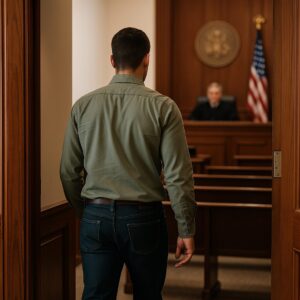When reports first surfaced that Bill Cosby was facing charges of sexual assault, millions of people who had grown up watching Cosby on TV were shocked. He had a reputation for providing wholesome entertainment, whether as Cliff Huxtable on The Cosby Show (arguably the most likable of TV dads of the 80s) or from Picture Pages, Jell-O commercials, or the Fat Albert cartoons. By 2018, though, Cosby’s sexual assault case is practically old news, namely that, in Cosby’s new trial, five accusers besides the alleged victim in the current case will be allowed to testify. This is only possible because of a rule of evidence called the doctrine of chances.
Establishing a Pattern of Behavior
In criminal trials, the prosecution and the defense must stay focused on the charges that the defendant is currently facing and avoid prejudicing the jury by making reference to previous crimes of which the defendant was convicted or acquitted. The jury is supposed to be neutral; furthermore, the prosecution must use evidence to show that the defendant is guilty, beyond a reasonable doubt, of the crime at hand, not that, in general, the defendant is a criminal. Sentencing someone to jail for having a bad reputation goes against the principal of a fair judicial system. Thinking of the scene in Monty Python and the Holy Grail in which witnesses at a witchcraft trial assert that the defendant is a witch because, “She looks like one,” and, “She turned me into a newt.” This is what the courts seek to avoid.
The doctrine of chances simply poses the question of “What are the chances?” that suspicious situations in which the defendant was involved were simply a coincidence. Its origins are in the 1915 trial of George Joseph Smith, who was charged with murdering his wife Bessie Munday by drowning her in a bathtub. Smith claimed that his wife’s death had been an accidental drowning. Of course, before marrying Munday, Smith was twice widowed; both wives had died by accidentally drowning in the bathtub. The prosecution argued that it was highly unlikely that Smith would lose three wives to the same type of accident.
It Matters Which Evidence Attorneys are Allowed to Present
Which evidence the jury hears can greatly affect the outcome of a criminal trial. If one side presents evidence that is unfairly prejudicial, the court can declare a mistrial. An important part of how lawyers build a case for or against a defendant’s innocence has to do with which evidence to present to the jury and which evidence to omit. Most famous examples of the doctrine of chances involve serial murders, but the Cosby case shows that it can also be invoked in sexual assault cases, as well.
Contact Madrid Law About Sexual Assault Cases
Whether to go to trial, and if you do, which evidence to present, is an important decision for anyone facing criminal charges. Contact Madrid Law in Houston for a consultation if you need legal advice about a sexual assault case.




